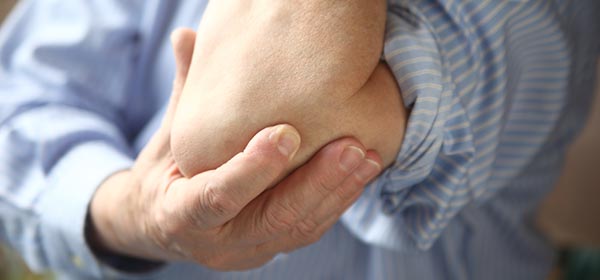Tennis elbow is one of the most common causes of elbow pain. Symptoms include a dull ache around the elbow and sharper localised pain with gripping or repetitive tasks. Despite the name, tennis elbow can be caused by other physical activities or repetitive tasks that include gripping.
Tennis elbow is a result of irritation and aggravation of the tendons around the forearm. Tendons attach muscles to the bone and tennis elbow results following degenerative changes around the tendon.
Early stage tennis elbow results from excessive load being placed through the tendon. This can be caused by unaccustomed activity (eg. painting, renovations, typing); excessive gripping or wringing activities or poor forearm strength. If not dealt with early, chronic changes and symptoms can occur.
Importantly, recent research has identified that inflammation is minimal in chronic tennis elbow. Pain with chronic tennis elbow is associated with changes in the blood supply and structural changes to the tendon. As a result, anti-inflammatories during the chronic stages have minimal impact.
If untreated, given the changes to the tendon, symptoms can last between six months to two years. Additionally, because of the weakened state of the tendon, recurrent bouts of symptoms are likely to occur.
Physiotherapy and specific exercise for the tendon is crucial for facilitating adaptation and repair of the tendon. Treatment can include gentle mobilisation of the elbow, muscle stretches, massage and exercises. In some cases, a tennis elbow brace may be beneficial to prevent further damage to the tendon. A tennis elbow brace works to dissipate stress away from the injured structures.
Appropriate strengthening exercises are crucial to create adaption and repair the tendon to prevent future episodes and symptoms. Strengthening exercises for tennis elbow are dependent on the stage of tennis elbow. As the tendon adapts and strengthens, associated symptoms will decrease. This process is dependent on the duration and severity of tendon changes. With appropriate rehabilitation and guidance, recovery from tennis elbow can range from six weeks to several months.
With patience and guidance from your physiotherapist, the symptoms and changes to the tendon can be resolved. While certainly not an overnight process, it is integral to consult your health professional as soon as possible to prevent further degeneration and changes to the tendon.
Jason Lee APAM
B. Physiotherapy
Malvern East Physiotherapy
Jason is happy to answer any questions you may have simply send an email to [email protected]
Related articles:
Controlling breathing
Coping with cramps

